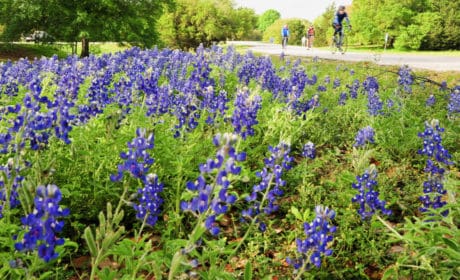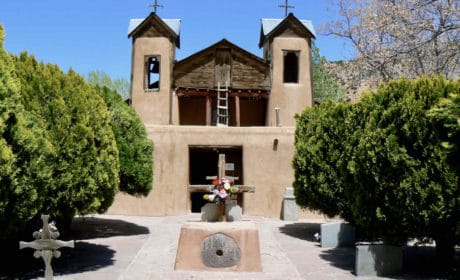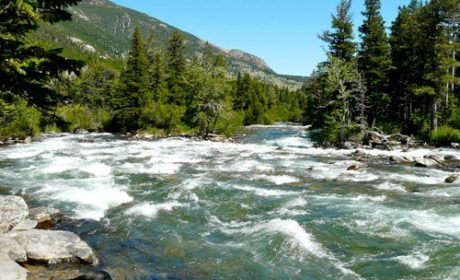Did you know that the birding in South Texas is world class? For avid birdwatchers, stopping to go birding in the Rio Grande Valley is a wonderful addition to your Texas road trip itinerary.
James Richardson is here with the best places to go for birding in South Texas. What a unique U.S. road trip!
There is one place I know that is definitely for the birds, and is all about the birds—the Rio Grande Valley, where you’ll find some of the best birding in Texas. During a couple recent sponsored visits to the southern tip of the state, I discovered a lot more about this part of the Lone Star State. Did you know that it’s an extraordinary bird watching location?
In the U.S. there are four major birding flyways, routes of migration for birds and waterfowl traveling north to south and vice versa. These birding flyways are the Atlantic, Mississippi, Central, and the Pacific.
Table of Contents
Birding South Texas
Southern Texas is a major bird migration corridor. It’s the location where two major flyways—the Central and Mississippi— come together. This allows the birder an even greater opportunity to see more species.

I wanted to visit as many birding sites along the Rio Grande Valley as possible. I was hopeful that I would see a few of the unique species of South Texas birds, like the Green Jay, the Plain Chachalaca, the Common Pauraque, and the Great Kiskadee.
This part of the Rio Grande Valley contains the World Birding Center, a series of nine different birding sites.

My South Texas birding trip would only include six of the nine sites, but I did enjoy some good birding. The six sites I managed to visit were the Quinta Mazatlan in McAllen, the Edinburg Scenic Wetlands, the Bentsen – Rio Grande Valley State Park in Mission, Estero Llano Grande in Weslaco, the Old Hidalgo Pumphouse, and the South Padre Island Nature and Birding Center.
I visited the majority of these locations while based in McAllen, Texas. For the South Padre Island facility, I stayed in Brownsville, which is only an hour’s drive from McAllen.
For the sake of space, I will only elaborate on a few of the locations.
Boomer Travel Tip
We recommend the Texas Road and Recreation Atlas for every Texas road trip!
Viewing South Texas birds at the Edinburg Scenic Wetlands

The Edinburg Scenic Wetlands is a 40-acre tract consisting of a lake and ponds with trails throughout the surrounding woodlands. There are platforms overlooking the water from which birders can enjoy observing waterfowl and shorebirds.
As many as thirteen species of ducks winter in these wetlands. The interpretive center has excellent displays and the full-length windows with provided telescopes allow for easy viewing of wildlife just the other side of the glass. It may not be as large as other sites I visited, but the birding was excellent.
Exploring the World Birding Center in Mission, Texas

In Mission, Texas, the Bentsen-Rio Grande Valley State Park serves as headquarters for the World Birding Center. The 760-acre tract is southwest of McAllen and adjoins another 1,700 acres of U.S. Fish and Wildlife land. The entire tract butts up against the Texas—Mexico border.

From a wheelchair accessible two-story observation tower, I saw Mexican buildings across the border as I was scanning the tree tops for raptors and other wildlife. Butterfly gardens and hummingbird feeders surround the park’s visitor center.
Visitors can travel through the park by tram, ride bikes, or walk the seven miles of trails. Dont’ miss stopping at two enclosed blinds to view or photograph birds up close. They were my favorite spots at the park.
Boomer Travel Tip
Need to update your road trip gear? Start with our recommendations for best road trip gear.
South Texas birdwatching at Estero Llano Grande

The next site of the World Birding Center is the Estero Llano Grande in Weslaco, just east of McAllen. It contains over 230 acres of varied landscape along the Rio Grande.

You’ll find lakes and woodlands at the largest wetland environment of the World Birding Center sites. Migrating waterfowl, waders, and shorebirds gather here, including the Wood Stork, the Roseate Spoonbill, and the Ibis.
This is the site where I spotted, with the help of the park rangers, the Common Pauraque, which I discovered is not too common. It is a well camouflaged bird.
Visiting South Padre Island Birding and Nature Center
After leaving the McAllen area, I drove to Brownsville located in the extreme southern part of Texas, where I stayed while visiting the other birding locations. The sixth of the World Birding Center sites I stopped at was the South Padre Island Birding and Nature Center, which is at the southern tip of the barrier island.

This site is very important for birds making the migration across the Gulf of Mexico from southern Mexico and points beyond. It only contains fifty acres but it is very inviting to birds.
The nature center has a long boardwalk with five bird blinds for observing and photographing. There is also a five story tower that looks over the beaches and dunes of South Padre Island.
Two other birding sites I visited while in the Brownsville area are not part of the World Birding Center, but I wanted to stop while in South Texas.
Traveling to Laguna Atascosa National Wildlife Refuge

About 36 miles northeast of Brownsville, the Laguna Atascosa National Wildlife Refuge is a huge parcel with 97,000 acres. Not all the acerage is open to the public, but a portion is available for wildlife watching, hunting, fishing, and photography.
There are numerous trails throughout the refuge that are open to the public. The Laguna Atascosa is noted as an excellent bird-watching destination. The refuge claims more recorded species of birds than any other refuge in the National Wildlife Refuge System according to its website.
The Laguna Atascosa refuge is another major stopover for birds going to and from Mexico. Again according to the Laguna Atascosa website, “In November alone, when peak use occurs, more than 250,000 ducks depend on the refuge and it is estimated that 80% of the North American population of redhead ducks winter in this area.”
This refuge plays an important role in the life of the redhead duck. They winter here and usually arrive from mid-October to the end of November.
The refuge is not only a great waterfowl location, but also many other species of songbirds and raptors, along with many species of mammals. Several endangered species are found at Laguna Atascosa, including the ocelot, a member of the cat family.
Ocelots are very reclusive with very few remaining in existence. I did not see an ocelot while visiting the refuge. I suppose I was looking up for birds and not down. However, I did stumble over a couple whitetail deer.
Birdwatching at Sabal Palm Nature Sanctuary

I stopped at one other site while on this South Texas birding road trip—The Sabal Palm Nature Sanctuary, located just south of Brownsville. It is a 557-acre refuge noted as one of the last locations in the Rio Grande Valley with a large stand of sabal palms, or cabbage palms.
However, the tree is still found in other parts of the Southern U.S. Many of the plants and animals in this sanctuary are found nowhere else in the country and are not found any farther north.
There are over four miles of hiking trails at the Sabal Palm Nature Sanctuary. The trails take visitors through the palm forest, over boardwalks, and to an observation deck.
To my liking there are also multiple bird blinds, which are always my favorite spot for bird photography. From these blinds I saw Green Jays and Plain Chuchalacas.
At these sites of the World Birding Center along the Rio Grande Valley, I managed to spot a number of rare birds and a ton of more common ones. These areas are hot spots for birders from around the world, hence, its name. But, besides being a fantastic birding destination, the Rio Grande Valley, and McAllen and Brownsville especially, have much to offer visitors.
Save to Pinterest




